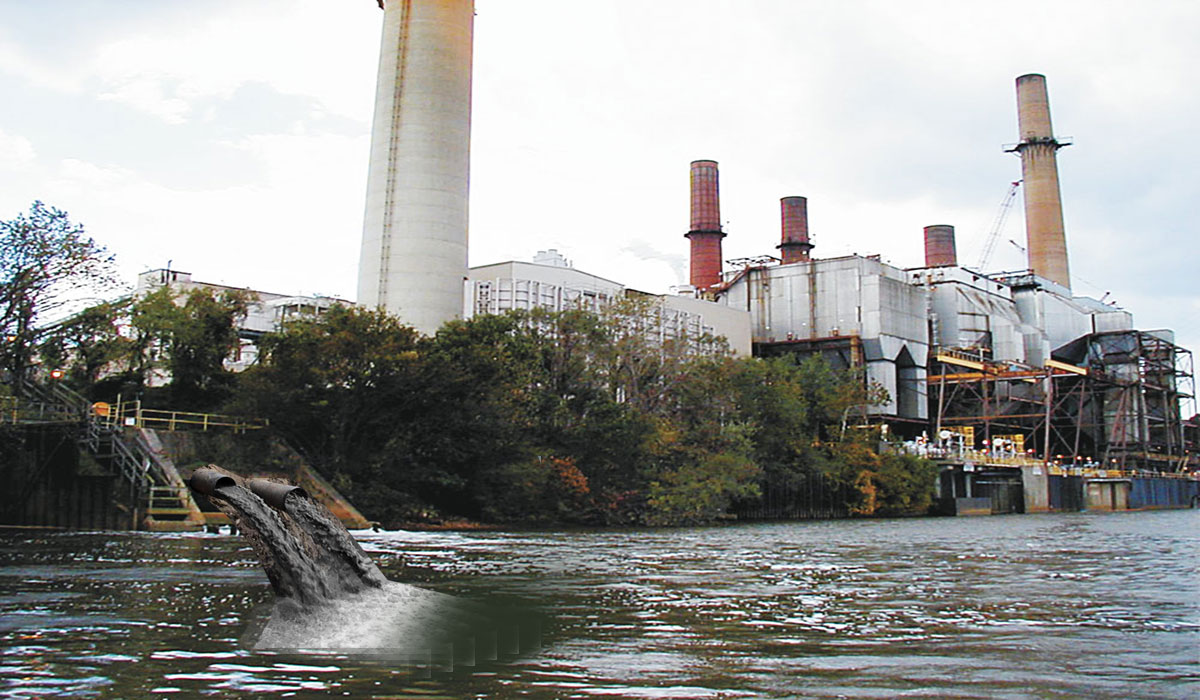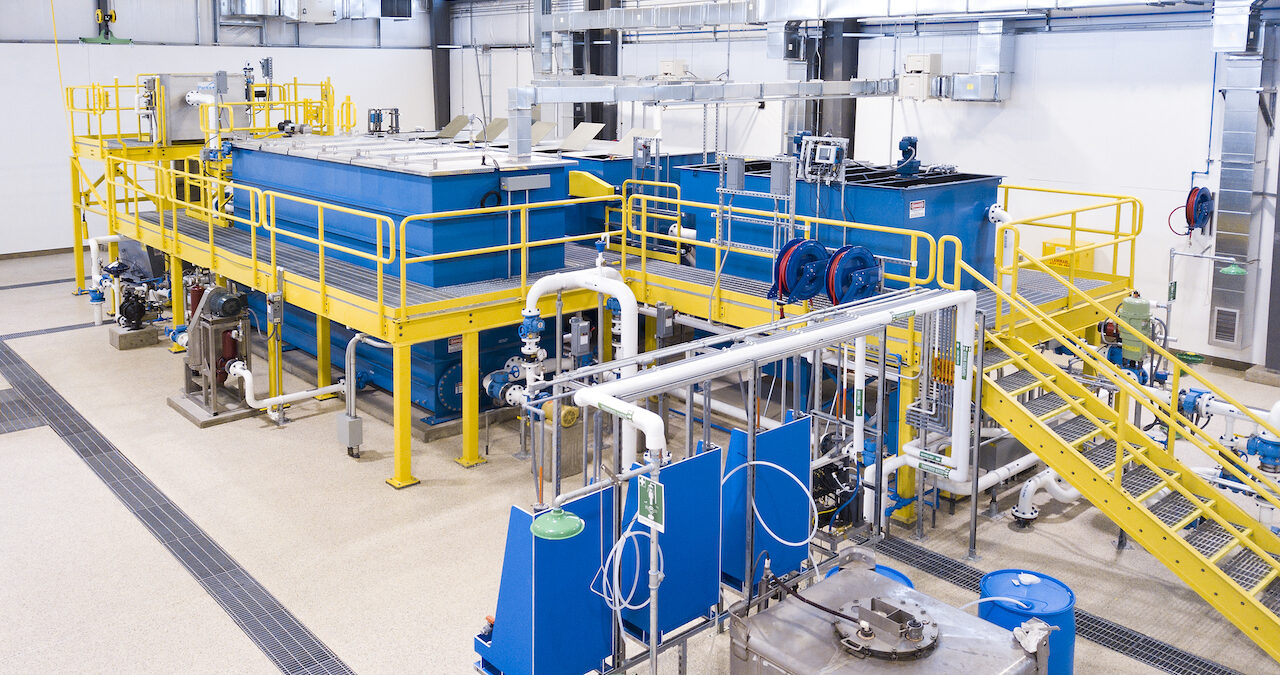Industrial Waste Water Treatment-- Cutting-Edge Technologies for Water Filtration
Industrial Waste Water Treatment-- Cutting-Edge Technologies for Water Filtration
Blog Article
Trick Techniques in Industrial Waste Water Therapy Procedures
The treatment of industrial wastewater is an important aspect of environmental administration, entailing an array of techniques developed to alleviate the influence of contaminants. Innovations in technologies such as membrane filtration and advanced oxidation processes provide ingenious options for boosting therapy efficiency.
Physical Therapy Approaches
How effectively can physical treatment methods deal with the complexities of industrial wastewater? Physical treatment methods play a critical role in the preliminary stages of wastewater management, focusing largely on the elimination of solids and huge particulates. Methods such as sedimentation, purification, and flotation are crucial for minimizing the focus of suspended solids, therefore enhancing the performance of succeeding therapy processes.
Sedimentation involves the gravitational settling of solids, permitting for the separation of heavier products from the wastewater. This method is especially effective in making clear water prior to chemical or organic therapies.
Additionally, flotation protection methods, which make use of air bubbles to lift put on hold solids to the surface for removal, are effective in treating wastewater with high focus of fats, oils, and oils. Overall, physical therapy methods work as a critical initial step in the thorough management of commercial wastewater, guaranteeing that the lots on succeeding treatment phases is reduced and enhancing general therapy efficacy.
Chemical Therapy Techniques
While physical therapy methods prepared for efficient wastewater monitoring, chemical therapy methods are important for resolving the a lot more intricate pollutants frequently located in industrial effluents. These methods make use of different chemical agents to speed up, neutralize, or oxidize dangerous materials, making sure a more detailed removal of toxins.
One typical method is coagulation and flocculation, where chemical coagulants such as light weight aluminum sulfate or ferric chloride are added to advertise the aggregation of put on hold bits. This procedure enhances solid-liquid separation, lowering turbidity and enhancing water quality. Furthermore, neutralization procedures are employed to change the pH of wastewater, using bases or acids to neutralize acidic or alkaline streams, respectively.
Oxidation-reduction responses play a crucial duty in degrading organic contaminants and microorganisms. Chemical oxidants like chlorine, hydrogen, or ozone peroxide are utilized to damage down complex natural substances, making them less unsafe or more naturally degradable. In addition, advanced oxidation procedures (AOPs) incorporate multiple oxidation techniques to improve contaminant elimination performance.
Biological Therapy Processes
The efficiency of wastewater treatment is substantially boosted by organic treatment processes, which harness the natural metabolic activities of microorganisms to break down raw material and eliminate contaminants. Industrial Waste Water Treatment. These processes mostly include anaerobic and cardio food digestion, each customized for particular types of wastewater
Cardiovascular treatment processes utilize oxygen to sustain microbial development, promoting the break down of organic pollutants right into co2 and water. Typical methods include turned on sludge systems, where oygenation storage tanks help with the mixing of wastewater with microbes, and dripping filters, which motivate biofilm development on media surface areas.
On the other hand, anaerobic treatment procedures happen in the absence of oxygen, utilizing anaerobic microorganisms to break down organic issue, resulting in biogas production, a renewable resource source. Anaerobic digesters are often used in industrial settings for this function, efficiently reducing the quantity of sludge while generating beneficial biogas.
The selection of an organic treatment approach depends upon wastewater characteristics, therapy goals, and regulative standards. The assimilation of biological procedures in wastewater therapy not only boosts contaminant elimination efficiency yet also advertises sustainability by minimizing chemical usage and sustaining resource healing.
Advanced Oxidation Processes

Usual AOP find out here techniques include Fenton's ozonation, reagent, and photocatalysis. Fenton's reagent, a mix of hydrogen peroxide and ferrous iron, catalyzes the formation of hydroxyl radicals, making it efficient for dealing with wastewater including phenolic compounds and various other stubborn substances.
AOPs use numerous advantages, including minimized sludge manufacturing and the ability to treat wastewater with high concentrations of natural toxins. Nonetheless, the implementation of AOPs needs cautious factor to consider of functional parameters and cost-effectiveness, guaranteeing that these sophisticated methods are suitably incorporated right into existing wastewater have a peek here therapy systems.
Membrane Layer Filtering Technologies

Microfiltration is reliable for getting rid of suspended microorganisms and solids, while ultrafiltration targets smaller sized organic molecules and viruses. Nanofiltration connects the void in between ultrafiltration and turn around osmosis, effectively eliminating natural substances and divalent ions. Reverse osmosis provides the highest degree of purification, utilized mostly for desalination and getting rid of mono-valent ions.
Membrane layer modern technologies offer various advantages, including low energy usage compared to standard therapy techniques, modular style for scalability, and the capacity for water healing and reuse. Difficulties such as membrane fouling and the need for regular upkeep have to be resolved to make certain system efficiency. Generally, membrane filtering innovations stand for a vital element of contemporary commercial wastewater therapy methods, promoting sustainability and resource preservation in water monitoring.
Final Thought
In final thought, industrial wastewater therapy uses a diverse array of techniques, consisting of physical, chemical, biological, and advanced approaches. Each technique plays an important role in properly attending to various impurities, enhancing water top quality, and promoting source sustainability. The combination of these techniques cultivates a detailed treatment method, guaranteeing that commercial effluents satisfy regulatory requirements while reducing ecological effect. Proceeded developments in these methodologies will certainly even more boost the efficiency and performance of wastewater treatment procedures in industrial settings.
The treatment of industrial wastewater is a critical element of ecological monitoring, involving a variety of strategies designed to reduce the effect of impurities.How efficiently can physical therapy approaches address the complexities of industrial wastewater?Advanced oxidation procedures (AOPs) represent an advanced strategy in industrial wastewater treatment, designed to efficiently break down natural pollutants that are frequently resistant to traditional therapy methods (Industrial Waste Water Treatment).In final thought, industrial wastewater treatment utilizes a varied variety of strategies, consisting of physical, chemical, organic, and progressed approaches. Proceeded innovations in these techniques will certainly further boost the performance and performance of wastewater therapy procedures in commercial setups
Report this page